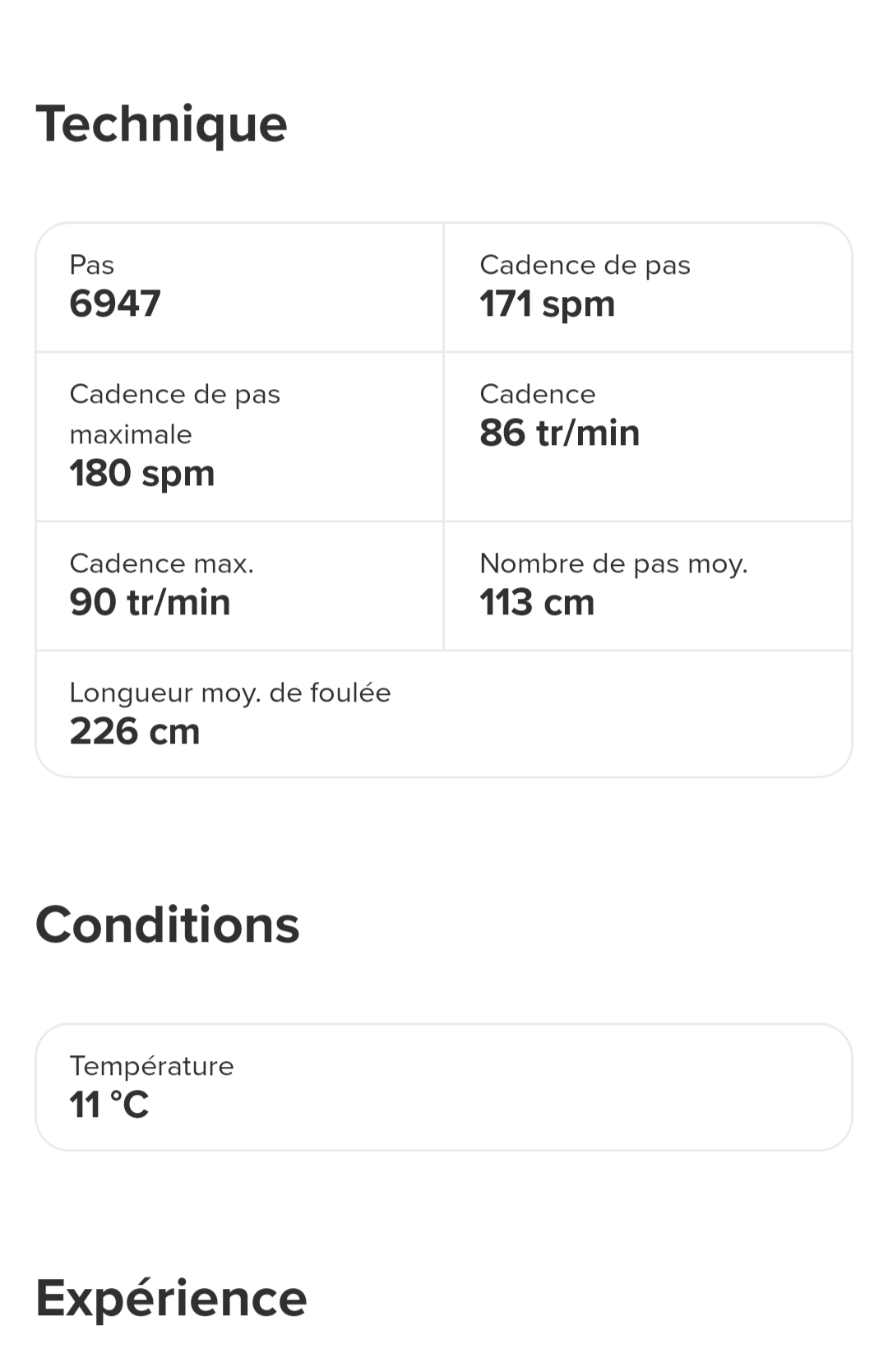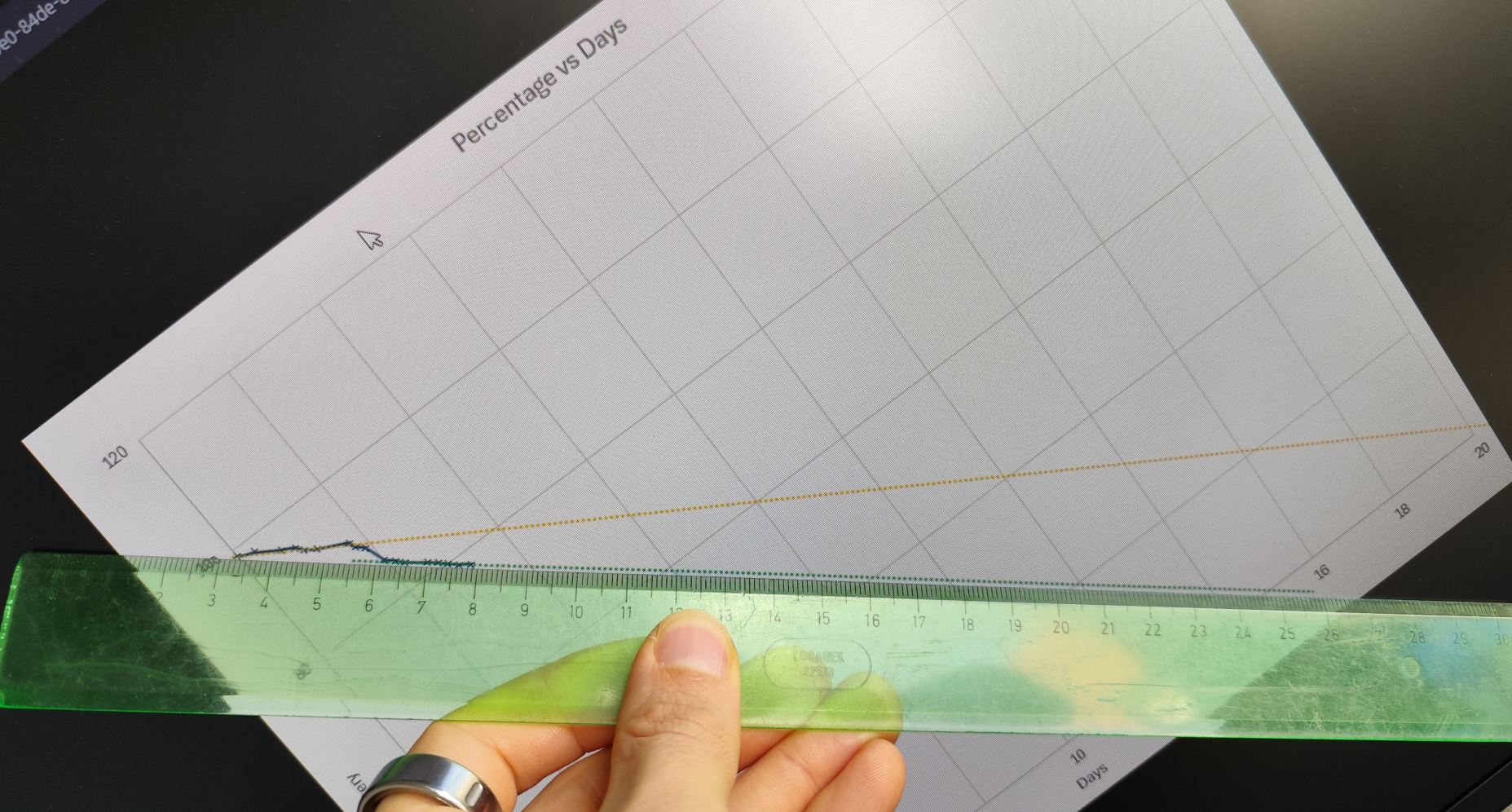Software Update 2.48.16 (2025 November Rain release)
-
I am on Vertical 2. And It tried yesterday without Stryd, but still it don’t show those metrics.
-
@v.sacre did you check the detailed stats in your app? Under technique I see Avg. ground contact time and Avg. vertical oscillation.

-
@Gideon-Kaempfer nothing under Technic section…

-
@v.sacre maybe it was too cold
 just joking. I just used the default basic running activity without any special settings on 2.48.16 firmware on the V2.
just joking. I just used the default basic running activity without any special settings on 2.48.16 firmware on the V2. -
@Gideon-Kaempfer Yes I did the same.
But maybe it is because I have a stryd connection? Even if for this specific activity, I was not wearing the Stryd… -
@v.sacre I can confirm that it is there (on Race 2). What model do you have?
-
@Horizontal_2
Yes, I understand what you’re saying. The thing is, when I put a ruler on it, I can see that the green trend line starts at the same point as the yellow one. From this, I conclude that activity was also included in the battery balance calculation.

It is quite questionable how to calculate the energy balance in batteries. The problem is that it depends on consumption. Higher performance requirements reduce the possibility of effectively utilizing the amount of energy in the battery.
If you calculate the battery capacity at low consumption, you will get a higher capacity than at higher consumption. That is, if the consumption is X and the battery runtime is Y, then if the consumption is 2*X, the runtime will be less than Y/2.
This is a problem of the battery’s internal resistance. The higher the current, the greater the internal energy consumption of the battery.It seems to me that Suunto tries to take into account how the user uses the battery when calculating the battery status so that the estimates are not too optimistic.
I am curious to see the continuation of your measurements

Translated with DeepL.com (free version)
-
@segi_pn Actually I doubt that Suunto do any predictive calculation based on user profile usage. IMHO they just measure normal % based on some battery voltage graph they have stored on the watch. When you do an exercise they transform the % into hours left based on their datasheet (e.g. if 65h in multi-freq GPS is the spec and you have 50% left, they will say 32h left). However, when you finish the activity (higher consumption) the normal % will immediately be shown to be lower (I think based on the battery voltage). This doesn’t explain the change in the graph trend which seems like a bug to me (e.g. maybe the BT remains connected to some device after the activity or maybe syncing to the app got stuck).
-
@segi_pn Thanks for the picture. It made me smile. I appreciate your time.
I think it’s a coincidence. During the green line I had the watch with many functions off, so the consumption should be low. Also, one run shouldn’t eat 5 days away.
The previous cycle I made a graph as well, and the same occured on different percentages (and only after a run). The difference then was that the drain was bigger and a soft reset helped.
It’s still following the green line. I’ll do a short run in a bit. Maybe that’s what the watch (or I) need!

We’ll see in a few days! I’ll keep sending Suunto batterylogs every cycle till the problem is solved

-
@Gideon-Kaempfer maybe it is time to start a new thread about battery physics.
Just to correct you:
the current battery charge level is not derived from a voltage measurement. Instead (as with all state of the art battery meters) the charge going into and out of the battery is integrated and subtracted from or added to the battery capacity.
As this method might miss a Coulomb here and there, the meter is calibrated when the watch is fully charged. At a certain max voltage the meter is set to equal 100% -
@Egika there is so much stuff that happen while I innocently running with my watch


-
@Dimitrios-Kanellopoulos Yes, the “ghost” bip/buzz when you power on a BT sensor is still there. Battery drain also, because it seems that BT process continues searching for BT devices as in the previous sw version.
Verified (and easily reproducible) in my Suunto Vertical. -
@thanasis According to my tests (also performed with the previous software) th BT connection process keeps searching for devices after finishing activities. I can reproduce the behavior just powering on my Heart rate sensor (Coospo), the watch bips and buzzes when connects to the sensor, in the watchface screen outside activities.
If you soft reset the watch, BT connection process is restarted and doesn´t search for devices until you start another activity.
In my case this is causing a 12-14% battery drain by day outside activities (Vertical Solar Ti).
I sent logs to Suunto. -
Just want to confirm that I’m also still experiencing the same battery behavior as @jjpaz above with no improvements over the previous software. Still have random ghost notifications (buzzes) outside of activities that seem to be BT related and random high battery consumption. Some days are good with normal battery drain, while others have significant drops, up to 10-15% overnight. This is for both 9PP and V1.
-
@Matúš said in Software Update 2.48.16 (2025 November Rain release):
Last Tuesday morning I’ve updated my 9PP to this firmware: during the evening, reached a battery level between 10-20%, I fully recharged the watch.
Today (now), after almost 7 days, the battery level is 64%.
From firmware 2.40.44, the last one stable and used on my watch, to 2.48.16 I’ve not changed anything in my routine and device use: actually, with 2.40.44, a 100% battery lasted more or less 8-10 days.
I will continue monitoring the battery discharge, to 10-20% and for the next battery cycles, but, at the moment, firmware 2.48.16 (for me) it’s doing its work.
For me it behaves like you describe but only until I have any sport mode activated.
Then nothing can stop the drain out of the battery.
3-4 days on 9pp. Factory reset or soft reset didn’t help. -
@Egika very interesting! I wasn’t aware that it’s become that sophisticated. I’m still using flashlights that report voltage levels

-
@jjpaz I have the same problem with SV and Suunto smart belt as I posted yesterday… these beeps appear several uncountable times during training and also after training… yesterday it seemed that the belt won’t disconnect after activity
-
@Horizontal_2 I’m interested in seeing some of your new graphs.
How did you make the graph? Which software do you use? Maybe I’ll try taking my own measurements with my Suunto Vertical. -
@segi_pn I’ll update in a day or two. I’m trying to turn on the Flight mode for the night, maybe longer. Just to see if the drain comes from connectivity. The graph of previous cycle was more exciting because sometimes it did get the 5% per day easily

It’s just Excel. Everytime I see the battery drop 1% I note the time in my phone. One or two times per day I update the sheet and voilla. Sometimes I skip a percentage

-
@Horizontal_2 said in Software Update 2.48.16 (2025 November Rain release):
I’m trying to turn on the Flight mode for the night, maybe longer.
Make sure you enable flight mode from Settings, not from Control panel. Don’t know if the bug is still there with current firmware, but Airplane mode toggle in Control panel would not disable Bluetooth. 🤨